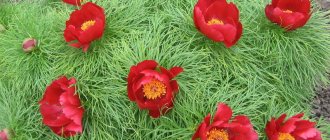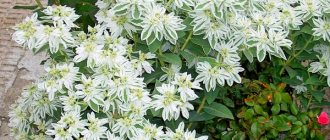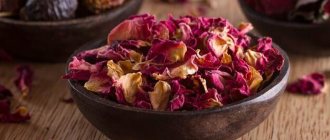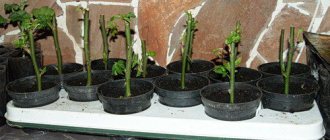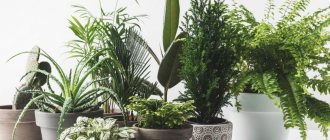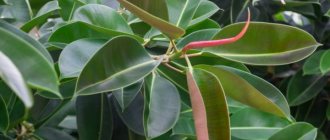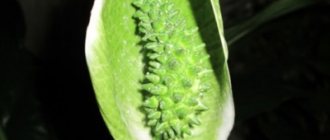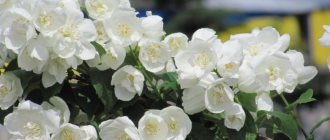Zinnia graceful Lime
Tall (90-100 cm) fast-growing annual with large (13-15 cm) densely double inflorescences. It is distinguished by abundant and long-lasting flowering - the first zinnia buds bloom at the end of June, and the last ones fall almost on the eve of the first frost.
They are highly resistant to bad weather, as they are not afraid of rain, gusty winds, or the scorching summer sun. Traditionally, zinnias are grown in seedlings, but in warm spring conditions it is permissible to sow them in open ground.
- Beautiful zinnia: varieties, cultivation and diseases
White, red, yellow, scarlet, purple, pink and even green zinnias are an excellent decoration for any flower garden.
List of the best evergreens for the garden
All crops that preserve greenery all year round can be divided into two groups. Let's talk about each of them.
Conifers
Their main difference from other plants is their leaves in the form of thin, long needles. Some conifers have flat, scaly foliage. Almost all seeds ripen in cones, the shape, size and shade of which depend on the species. We list the most popular evergreen conifers among gardeners.
Spruce
A beautiful fluffy tree with short needles and brown cones. The average height of a tree is 25-30 m, under favorable conditions it grows up to 50 m. Spruce trees tolerate shading well and can grow in partial shade and in the sun. Sensitive to humidity and air purity. They prefer slightly alkaline light soils and moderately moist loams. There are more than 45 varieties of conifers. The following types can be recommended for the site.
- Ohlendorffy. A multi-topped, low-growing Christmas tree with needles of a golden-green hue. Grows up to 200 cm.
- Akrokona. Compact spruce up to 400 cm high, grows very slowly. The needles are dark green, the cones are lilac-crimson.
- Herman Nau. Dwarf Christmas tree no more than 150 cm high. The crown is cushion-shaped, the needles are grayish-blue.
Spruces are good in single and group plantings, for example, at the front entrance to a house or as the central figure of a multi-tiered composition. Dwarf and low-growing specimens are planted in mixborders or rockeries, and they are used as hedges.
Pixabay
Instagram green_garden.ua
Cypress
Tall conifer with scaly leaves. The crown can be pyramidal or spreading. Does not like bright sun rays and strong shadow. The best option is partial shade. Prefers loose fertile soil mixtures. It does not tolerate waterlogging; in lowlands it is planted only on well-drained soils. We list the best varieties for decorating the local area.
- Large-fruited. A tall tree with beautiful yellowish needles. Can grow up to 35-40 m, so pruning is required. Has a very pleasant lemon aroma.
- Tuevidny. A compact tree with a pyramidal crown of bluish-green color. Its peculiarity is the presence of needle-like needles, which gradually turn into scaly ones.
- Leyland. Tall, fast-growing hybrid with a columnar crown and scaly needles. The trunk is covered with glossy bark of a dark red or brown tone.
Cypress trees are unpretentious and tolerate pruning well. Low-growing varieties can be used as a basis for topiary.
Pixabay
ShutterStock
- Landscape
How to harmoniously integrate conifers into the landscape design of a garden: tips and 60 photos
Yew
Beautiful slow growing conifer. There are shrub and tree varieties. The needles are short, soft, very pleasant to the touch, and have a rich green hue. Produces fruits in the form of scarlet berries. Yew is shade-tolerant and unpretentious. It takes root well on any soil, but prefers a fertile neutral substrate without excessive moisture. We list the best varieties for landscaping.
- Pointed. Tree species can reach 20 m, but on average do not grow higher than 6 m. Shrub species are low and creeping. The needles are crescent-shaped, dark green on top and light on the back.
- Short-leaved. Multi-stemmed, slow-growing tree, growing from 5 to 15 meters. The crown is wide, shaped like a pin. The needles are flat and straight. The berries are bright scarlet.
- Canadian. Frost-resistant shrub-type variety. Grows up to 100-150 cm in height and up to 300-400 cm in width. In winter, the needles take on a red-brown hue.
All cypress trees tolerate pruning well, which is used in landscape design to create topiaries and park sculptures. You need to know that cypress cones, bark and needles contain substances that are toxic to humans and animals. Therefore, you need to be careful when planting it where children and pets will walk.
Pixabay
ShutterStock
ShutterStock
Thuja
Decorative conifer with many varieties. Among them there are dwarf shrubs that grow up to half a meter, and seventy-meter giant trees. Thujas are unpretentious, frost-resistant, grow well in partial shade and shade. Young seedlings have soft needles, which over time turn into scaly needles. These varieties can be recommended for the local area.
- Brabant. Belongs to Western varieties. Frost-resistant, fast-growing thuja with emerald needles. The crown is pyramidal in shape. Under natural conditions it can grow up to 40 m; in decorative plantings it does not exceed 4 m.
- Biota. An oriental variety with small needles pressed tightly to the branches. The crown is openwork-pyramidal. The cones are small, greenish-blue, dark brown when ripe.
- Japanese. Decorative coniferous tree up to 9 m high. The crown is pyramidal, the branches are directed upward. The needles are emerald green with a silvery tint and have a strong, pleasant aroma.
Thujas are very different, which makes it possible to choose the most suitable type for your site. They go well with other plants, especially boxwood, juniper, and barberry. Suitable for arranging hedges, flower beds and single plantings.
Pixabay
Pixabay
- Landscape
Planting thuja in open ground: useful tips and step-by-step instructions
Deciduous
Deciduous plants differ from conifers in the presence of lamellar petiolate foliage. Its shape and size can be very different. We offer names and photos of deciduous evergreens for the garden.
Heather
A monotypic creeping shrub with a height of 25 to 70 cm. It has many upward-pointing branches covered with small triangular leaves. They are bright green, slightly rolled into a tube. In midsummer the heather blooms. It is covered with bells of a lilac-pink hue. The plant is unpretentious, prefers open areas and slightly acidic soils. Feels normal on poor soils. For landscape decoration, we can recommend these varieties of heather.
- Erika. It grows as a subshrub, shrub or tree with small, pine-like leaves. The pink or white flowers resemble drooping bells and are collected in large clusters.
- Yana. Compact shrub up to 30 cm high. The branches are very dense, straight, directed upwards. The flowers are large, double, bright pink. Flowering begins in early autumn and ends in November.
- Carmen. A compact, round-shaped bush 30-40 cm high. The shoots are covered with very small leaves of a rich dark green tone. Purple or pink flowers are collected in long, up to 10 cm, peduncles.
Heather is suitable for uniform plantings. For a greater decorative effect, you can choose different varieties. The evergreen bush also goes well with other crops, for example, juniper or thuja.
Eustoma
Photo newplantsandflowers.com
Despite the obstinate nature of eustoma, many gardeners do not lose hope that one day this beauty will change her anger to mercy and will still rise. And they love this stubborn decorative culture, among other things, for its wide variety of tones and shades. The following varieties and hybrids boast an unusual soft green color of flowers:
Lime Green from the Mariachi series. Tall (75-90 cm) eustoma with large 5-7 cm flowers.
Green from the Super Magic series. It is distinguished by large double flowers of a pale green hue. In our country this variety is also known as Green Alley.
Green from the ABC series. Perhaps one of the tallest plant varieties, which can reach 100 cm in height.
Green colors and shades
Here are the varieties of green colors and shades, a list of interesting, unusual tones and their names, as well as HEX and RGB codes. For each color you can follow the link and download it.
- Green HEX: #008000, RGB: 0.128.0
Go to gradation
- Harlequin HEX: #44944A, RGB: 68,148,74
- Grandma's Apples HEX: #A8E4A0, RGB: 168,228,160
- White-green HEX: #BDECB6, RGB: 189,236,182
- Turquoise Green HEX: #1E5945, RGB: 30,89,69
- Pale Green HEX: #89AC76, RGB: 137,172,118
- Pale Green HEX: #98FB98, RGB: 152,251,152
- Shiny Green HEX: #47A76A, RGB: 71,167,106
- Swamp HEX: #ACB78E, RGB: 172,183,142
- Bottle Green HEX: #343B29, RGB: 52,59,41
- Spring Green HEX: #00FF7F, RGB: 0,255,127
- Verdepo HEX: #34C924, RGB: 52,201,36
- Spring bud HEX: #A7FC00, RGB: 167,252.0
- Rifle Green HEX: #414833, RGB: 65,72,51
- Deep Green HEX: #004524, RGB: 0.69.36
- Mountain Meadow HEX: #30BA8F, RGB: 48,186,143
- Dartmouth Green HEX: #00693E, RGB: 0.105.62
- Yellow-green HEX: #9ACD32, RGB: 154,205,50
- Yellow Green Crayola HEX: #C5E384, RGB: 197,227,132
- Green Lawn HEX: #7CFC00, RGB: 124,252.0
- Green-yellow HEX: #ADFF2F, RGB: 173,255,47
- Lime Green HEX: #BFFF00, RGB: 191,255.0
- Green Sea HEX: #2E8B57, RGB: 46,139,87
- Green Jungle HEX: #3BB08F, RGB: 59,176,143
- 90's Green Jungle HEX: #29AB87, RGB: 41,171,135
- Crayola Green HEX: #1CAC78, RGB: 28,172,120
- Green Lichen (Moss) HEX: #ADDFAD, RGB: 173,223,173
- University of Michigan Green HEX: #006633, RGB: 0.102.51
- Moss Green HEX: #2F4538, RGB: 47,69,56
- Fern Green HEX: #4F7942, RGB: 79,121,66
- Trefoil Green HEX: #009A63, RGB: 0.154.99
- Green tea HEX: #D0F0C0, RGB: 208,240,192
- Emerald HEX: #009B77, RGB: 0,155,119
- Emerald HEX: #50C878, RGB: 80,200,120
- Emerald Green HEX: #287233, RGB: 40,114,51
- Indian Green HEX: #138808, RGB: 19,136.8
- Irish Green HEX: #4CBB17, RGB: 76,187,23
- June Bud HEX: #BDDA57, RGB: 189,218,87
- Maple Green HEX: #507D2A, RGB: 80,125,42
- Screaming Green HEX: #76FF7A, RGB: 118,255,122
- Lime HEX: #00FF00, RGB: 0.255.0
- Lime Green HEX: #32CD32, RGB: 50,205,50
- Forest Green HEX: #228B22, RGB: 34,139,34
- Leaf Green HEX: #2D572C, RGB: 45,87,44
- Leaf Green Crayola HEX: #6DAE81, RGB: 109,174,129
- May Green HEX: #4C9141, RGB: 76,145,65
- Malachite HEX: #0BDA51, RGB: 11,218.81
- Myrtle HEX: #21421E, RGB: 33,66,30
- Sea Green HEX: #54FF9F, RGB: 84,255,159
- Sea Green Crayola HEX: #9FE2BF, RGB: 159,226,191
- Muslim Green HEX: #009900, RGB: 0.153.0
- Mint Green HEX: #20603D, RGB: 32,96,61
- Mint HEX: #3EB489, RGB: 62,180,137
- Rich Yellow-Green HEX: #7F8F18, RGB: 127,143,24
- Rich Green HEX: #006B3C, RGB: 0.107.60
- Rich Olive Green HEX: #0A4500, RGB: 10.69.0
- Subtle olive HEX: #6B8E23, RGB: 107,142,35
- Jade HEX: #00A86B, RGB: 0,168,107
- Common Spring Bud HEX: #C9DC87, RGB: 201,220,135
- Olive Yellow HEX: #999950, RGB: 153,153,80
- Olive Green HEX: #424632, RGB: 66,70,50
- Olive Green Crayola HEX: #BAB86C, RGB: 186,184,108
- Olive HEX: #808000, RGB: 128,128.0
- Hunter Green HEX: #355E3B, RGB: 53,94,59
- Fern HEX: #71BC78, RGB: 113,188,120
- Fern Green HEX: #3D642D, RGB: 61,100,45
- Pastel Green HEX: #77DD77, RGB: 119,221,119
- Patina Green HEX: #316650, RGB: 49,102,80
- Pearl green HEX: #1C542D, RGB: 28,84,45
- Pigment Green HEX: #00A550, RGB: 0.165.80
- Reseda Green HEX: #587246, RGB: 88,114,70
- Lime HEX: #99FF99, RGB: 153,255,153
- Light Green HEX: #90EE90, RGB: 144,238,144
- Celadon HEX: #ACE1AF, RGB: 172,225,175
- Gray green tea HEX: #CADABA, RGB: 202,218,186
- Signal Green HEX: #317F43, RGB: 49,127,67
- Pine Green HEX: #2C5545, RGB: 44,85,69
- Asparagus HEX: #7BA05B, RGB: 123,160,91
- Asparagus Crayola HEX: #87A96B, RGB: 135,169,107
- Dark Green HEX: #013220, RGB: 1,50,32
- Dark Green Sea HEX: #8FBC8F, RGB: 143,188,143
- Dark olive HEX: #556832, RGB: 85,104,50
- Dark Spring Green HEX: #177245, RGB: 23,114,69
- Dark Yellow-Green HEX: #57A639, RGB: 87,166.57
- Herbal HEX: #5DA130, RGB: 93,161,48
- Grass Green HEX: #35682D, RGB: 53,104,45
- Transport Green HEX: #308446, RGB: 48,132,70
- Moderate Green Sea HEX: #3CB371, RGB: 60,179,113
- Pistachio HEX: #BEF574, RGB: 190,245,116
- Phthalocyanine Green HEX: #123524, RGB: 18,53,36
- Chrome Green HEX: #2E3A23, RGB: 46,58,35
- Love Toad Color HEX: #3CAA3C, RGB: 60,170,60
- Christmas tree color HEX: #2A5C03, RGB: 42,92,3
- Chartreuse (Poison Green) HEX: #7FFF00, RGB: 127,255.0
- Electric Lime Crayola HEX: #CEFF1D, RGB: 206,255,29
- Vivid Yellow-Green HEX: #93AA00, RGB: 147,170.0
- Bright Green HEX: #007D34, RGB: 0.125.52
See also:
Yellow colors and shades
Winged tobacco Deep Lime
Winged tobacco also has its own “green lines” of varieties and hybrids. For example, Deep Lime from the Cuba series is distinguished by its not too tall growth (25-30 cm), while the Lime Green variety boasts more impressive dimensions - the diameter of its bush can reach 75 cm, and the height almost always exceeds 50 cm.
This plant loves the sun very much and reacts extremely poorly to shade, but when planted in partial shade it can bloom very well, although not as abundantly as tobacco grown in the sun.
Soft cuff
Soft mantle belongs to that rare category of plants that can bloom throughout almost the entire season. Gardeners love this culture not only for its velvety inflorescences, which during the flowering process change their tone from soft green to pale yellow. If you don’t miss the moment and cut off the faded inflorescences towards the end of summer, the plant will give you a second wave of flowering.
- 15 perennials that bloom all summer
A selection of popular and unusual perennials for the garden!
Molucella (Irish bluebell)
In the middle zone, molucella is grown as an annual. This is a tall 70-90 cm plant with branched shoots and powerful peduncles, collected in a kind of bush. Molucella leaves are rounded, with serrated edges.
However, it is not they that attract attention, but the bracts of this plant - pale green funnel cups surrounding small white molucella flowers. Pseudobells collected in a dense spikelet inflorescence look very elegant and unusually impressive. The original molucella “candles” will decorate the flower garden for a very long time - from the end of June to mid-September.
- 16 charming flowers that look like bells
Want more bluebells in your garden? There are 16 of them on our list!
Trees
Trees that remain decorative all year round are planted on the site both singly and in groups, create hedges, and become the main accent in a mixborder.
Yew berry
Yew berry belongs to the class Coniferous, the Yew family. It grows up to 20 m in height, although this will take more than one century. Unlike conifers, it does not have cones, but seeds surrounded by a fleshy, juicy red shell, similar to berries. That is why it is also called “mahogany”.
All parts of the plant, except the fruit shell, are poisonous!
Relict trees are common in the Caucasus and the Black Sea coast. Shrub forms are more often used in cultivation.
“Repandance” is a low-growing, shrubby yew, growing up to 50 cm. It is planted on alpine hills, in mixborders, along paths, around ponds
Interesting varieties with unusual colored needles. For example, “David” (bright lime), “Summergold”, “Cooper Gold” (yellow), “Elengatissima” (light green, cream). All of them are suitable for growing in the middle zone.
"Elengatissima" grows no more than half a meter, the intensity of the color of the needles depends on the light
Boxwood
Boxwood occurs in woody and shrub forms; about 30 varieties are known. Trees can grow up to 12-15 m. These are also ancient, relict plants, which in nature, together with yew, form large yew-boxwood groves. Boxwood has leathery, oblong leaves located oppositely on the stem. Small, inconspicuous flowers emit a strong aroma. The wood is very dense and heavy.
Decorative forms are traditionally used by designers to decorate the landscape
Variegated species are interesting, for example, evergreen boxwood “Variegata” (pictured).
An unpretentious, shade-tolerant shrub feels good in a pot, suitable for indoor keeping
Holly
Holly (holly) belongs to a genus of trees and shrubs of the Holly family, growing in temperate and tropical climates. In their natural environment, trees reach 10-20 m. Holly leaves are beautiful, shiny, carved, dark green or two-colored; may have thorns. The brightly colored berries (drupes) of red, orange, yellow, white or black often remain on the branches throughout the winter.
Holly is especially prized in Europe, where it is used to make wreaths to decorate homes at Christmas.
Holly is unpretentious in care, but loves fertile soils, responds to fertilization with abundant foliage and flowering, and responds well to formative pruning. When planting in the garden, hydrangea, mahonia, cypress, and euonymus will make good company for holly.
For growing in the country, it is more convenient to choose dwarf hybrids or spectacular variegated shrubs, for example, “Argentea Marginata”
Tulip Green Jay
A late-blooming variety of green-flowered tulips with large 6-10 cm flowers. The height of the plant is about 40 cm, the flower petals are fringed. At the very beginning of flowering, the color of the perianth tends more to green, but if the flower grows in the sun, then gradually the edges of the petals begin to turn yellow. However, even in this case, the center of the petal remains green.
- 15 main types of tulips - do you have everything (photos, descriptions, varieties)
All classes of tulips in one article
Echinacea Green Jewel
The emerald flowers of Green Jewel Echinacea are the treasure of any garden. If you love daisies, then this plant will definitely not leave you indifferent. The relatively tall (50-60 cm) perennial begins to bloom in July and ends only in September. The main thing is to remove wilted buds in a timely manner.
Like all echinaceas, plants of this variety are distinguished by their love of the sun, so it is better not to plant them in the shade or even partial shade.
- Echinacea in the garden: care calendar from February to October
How to properly care for garden echinacea throughout the growing season?
Rose Limbaugh
Photo ludwigsroses.co.za
Limbo is one of the most popular varieties of “green” roses. Since varieties with a pure green color do not yet exist, varieties and hybrids with petals of yellow-green tones are usually included in this group. The buds are cone-shaped, the petals have a scalloped edge.
The flowers, consisting of 45-47 petals, form a 7-8 cm cup when fully opened. One of the main advantages of this rose is that its flowers can remain on the bush for a long time. In addition, many rose growers note that if the plant is fed in a timely manner and faded buds are removed, it will bloom again.
- Roses for beginner gardeners: 10 popular varieties
What varieties of roses should a summer resident who is just beginning to master the intricacies of caring for this capricious flower choose?
Green "dozen" flowers
Green flowers look very unusual, and a garden with them completely resembles a picture from some science fiction novel. It is quite possible that such an unusual design option will not suit everyone. In addition, green flowers have one significant drawback - they blend in with the foliage and grass of the garden. However, it is interesting to look at plants with green flowers or inflorescences.
1. Astrantia. Large Astrantia plants have decorative dissected leaves and attractive white-green flowers. Varieties 'Celtic Star', 'Green Tapestry', 'Jade Lady', 'Snow Star'. The largest and greenest branches are from the popular variety 'Shaggy'.
2. Phloxes. The large, dense inflorescences of the Feelings series varieties look impressive: 'Pleasant Feelings' is lemon green, 'Pure Feelings' is greenish-white. Both varieties have a mid-late flowering period.
3. Rose. The only truly green rose is 'Viridiflora'. In addition, there are many varieties with varying degrees of green tones: 'Green Diamond', 'Green Ice', 'Grensleeves', 'Rainforest', 'Pur Caprice', 'Elfe', 'Lovely Green'.
4. Hydrangea. The caps of light green Hydrangea paniculata 'Limelight' flowers, appearing in July, turn pink in autumn. And the huge round inflorescences of the famous tree hydrangea 'Annabelle', on the contrary, change their color over time from white to rich green.
5. Echinacea. The greenest of all varieties of “American daisies” are Echinacea 'Jade' and 'Green Jewel'. Over time, the green petals of the 'Green Envy' variety turn pink as they bloom.
6. Amaranth paniculata. One of its new varieties, “Rushnichok,” received its name because of its unusual inflorescences. Its originality lies in the green inflorescences with brightly colored burgundy tips of the brushes, similar to cross-stitched patterns.
7. Tobacco. A classic and beloved annual by many, fragrant tobacco has a pleasant aroma that intensifies in the evening. The variety 'Lime Green' with yellowish-green flowers reaches 1–1.2 m in height..
8. Tulips. A bright spring decoration of the green flower garden is the parrot tulips 'Super Parrot' and 'Green Wave'. The first has petals mixed with white, the second has pink petals, but green is still the main one.
9. Hellebore. Another decoration of the spring garden is the apple-green cupped flowers of hellebore.
10. Clematis. Double flowers of unusual white and green colors adorn the Japanese variety 'Yukiokoshi'.
11. Gladiolus. Of course, this is exotic, and such plants are quite rare. Some of the green varieties have been bred for quite some time. In particular, back in 1978, the Emerald Ripples variety was created, which to this day is considered the leader among green gladioli.
12. Chrysanthemum. At the end of summer and autumn, the Revert chrysanthemum variety can boast of green color. At one time, the name of this flower was given by Carl Linnaeus. The name literally translates as “golden flower.” However, Revert chrysanthemum flowers can be colored not only yellow, but also green. This is, indeed, a natural greenish tint, which fades as the flower blooms, turning into yellow.
Based on Internet materials.
Hydrangea paniculata Limelight
Hydrangea paniculata Limelight is rightfully considered one of the most outstanding varieties of this plant. Unlike many other hydrangeas with large flowers, Limelight can be grown without any support - the powerful shoots of this hydrangea are so reliably supported by the lush caps of flowers.
The color of the petals largely depends on the degree of insolation: in hydrangeas growing in partial shade, they are greenish, while in bushes planted in the sun they are pure white, and at the end of the flowering period they are slightly pinkish.
Tulips
Unlike the capricious rose, tulips are considered one of the most successful plants for decorating seasonal garden beds. In most cases, gardening stores offer so-called green-flowered varieties, that is, those with buds of yellow, orange, red and other shades with stripes and veins of dark green. These are the popular pink Greenland, Hollywood, China Town, and delicate Spring Green and Super Parrot, milky white tulips, and the exotic purple Violet Bird and many, many others. However, among the different varieties of tulips you can find a flower with green petals: this is the variety Brooklyn (Brooklyn) with an inflorescence cup of a very unusual shape and a real miracle of selection - La Bizarre.
Tulips are also used to make flower arrangements. Just 10-15 years ago, bouquets of these flowers, along with mimosas, were considered a symbol of the spring holidays. Today, in any season, you can buy delicate flowers of various shapes and shades - tulips - as a gift. White-green varieties, for example Spring Green, popular in Russia, are usually given as a mono-bouquet, and rare green varieties are often used in tandem with bright flowers to create original compositions.
Clematis Yukiokoshi
Yukiokoshi is a very old clematis variety of the second pruning group. It is distinguished by large double or semi-double flowers of a greenish or yellowish-white hue.
A compact shrub that prefers sunny places well protected from the wind, but can also thrive in partial shade.
- What types of clematis are there - review of groups, best varieties (photo)
Let's figure out which clematis to plant in the garden so as not to make a mistake.
The above list of plants is far from complete, but it allows us to appreciate the beauty and diversity of crops with flowers of such an unusual green color.
